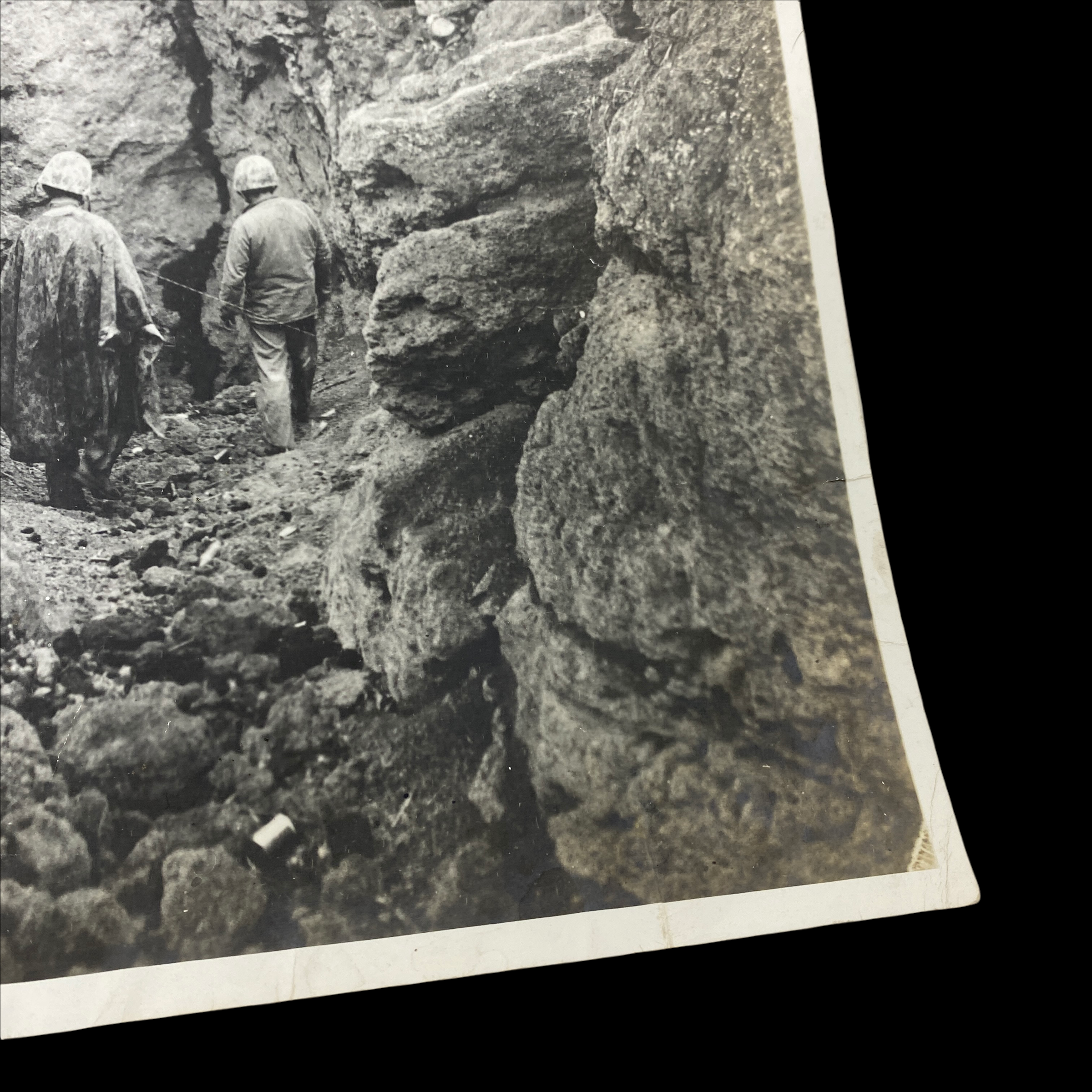1945 Original Iwo Jima RESTRICTED 'JICPOA' Military Intelligence USMC Photograph







1945 Original Iwo Jima RESTRICTED 'JICPOA' Military Intelligence USMC Photograph
Comes with C.O.A.
Size: 8 x 9.5 inches
Comes with C.O.A.
This is an incredible unreleased and unseenJICPOA (Joint Intelligence Center Pacific Ocean Area) photograph taken by a U.S. military JICPOA photographer during U.S. operations on Iwo Jima.
*This is the original developed photograph, making this the original 1 of 1 and very rare Iwo Jima historical artifact. The condition is remarkable and is truly a museum grade artifact. When framed, this would be the prized piece for any USMC, WWII, or Iwo Jima collection.
Marked ‘RESTRICTED’ this very rare photograph shows the absolute true destruction of war and was never meant to be released to the public. The job to take these photographs were extremely dangerous as they were taken during the operation and often times very much near the front lines. These were then sent and developed by JICPOA where they were used for future military intelligence and future planings of operations in the Pacific Theater.
Joint intelligence production extended to theater level as well. Each JICA, for instance, produced limited theater intelligence, conducting studies when other means were unavailable. The most significant theater production effort, however, occurred in the central Pacific, with the Joint Intelligence Center Pacific Ocean Area (JICPOA). This activity was established in September 1943 to collect, collate, evaluate, and disseminate strategic and tactical intelligence for the commander in chief, Pacific Ocean Areas. Truly joint, it fully integrated representatives from all the services. By 1945, it had 1,800 personnel assigned to its facility in Hawaii as well as hundreds at its Advanced Intelligence Center (AIC) on Guam and at other locations. JICPOA became an intelligence factory, producing various area handbooks, maps, and intelligence summaries aimed at supporting theater combat operations. The products were used by operational planners and commanders in drafting plans for operations from Galvanic (Tarawa) to Downfall (the invasion of Japan).
Iwo Jima:
On February 19, 1945, U.S. Marines made an amphibious landing on Iwo Jima and were met immediately with unforeseen challenges. First and foremost, the beaches of the island were made up of steep dunes of soft, gray volcanic ash, which made getting sturdy footing and passage for vehicles difficult.
As the Marines struggled forward, the Japanese laid in wait. The Americans assumed the pre-attack bombardment had been effective, and had crippled the enemy’s defenses on the island.
However, the lack of immediate response was simply part of Kuribayashi’s plan.
With the Americans struggling to get a foothold on the beaches of Iwo Jima—literally and figuratively—Kuribayashi’s artillery positions in the mountains above opened fire, stalling the advancing Marines and inflicting significant casualties.
Despite a banzai charge by dozens of Japanese soldiers as dusk fell, however, the Marines were eventually able to move in past the beach and seize part of one Iwo Jima’s airfields—the stated mission of the invasion.
Within days, some 70,000 U.S. Marines landed on Iwo Jima. Although they significantly outnumbered their Japanese enemies on the island (by a more than three-to-one margin), many Americans were wounded or killed over the five weeks of fighting, with some estimates suggesting more than 25,000 casualties, including nearly 7,000 deaths.
The Japanese, meanwhile, were also suffering major losses, and were running low on supplies—namely, weapons and food. Under Kuribayashi’s leadership, they mounted most of their defenses via attacks under the cover of darkness.